
Effective User-generated Content Strategies to Boost Sales for Your Dropshipping Store
Having a good user-generated content strategy should be a must in any marketing plan.
Let’s say you want to buy an iPhone X, will you meet all of your friends who already have this smartphone one by one and ask them about iPhone X’s camera? Or, instead, you go to Google, enter “iPhone X review”, and read all reviews about it? It’s likely you will spend more time on the Internet. Definitely.
For customers, word-of-mouth recommendations have been always considered the most trusted source of advertising. They still look to their family, friends, and peers for advice when they want to purchase something. But now, a lot of those recommendations are online in the form of user-generated content (UGC).
That’s why UGC increasingly plays a crucial role in any marketing strategy of all eCommerce owners, especially dropshippers. If you are running a dropshipping business, you should zero in on UGC to gain customers trust and boost sales right from the start.
Today, let’s find out what exactly UGC is and ways to use it to promote your dropshipping store. You’ll learn many effective strategies which are hard to find anywhere else, for sure.
What does user-generated content look like?
User-generated content (UGC), basically, is the content created by any customer, follower, or user. It can refer to pictures, videos, testimonials, tweets, Instagram posts, Facebook posts, blog posts, and everything in between. Generally, UGC is the act of users promoting a brand rather than the brand itself.
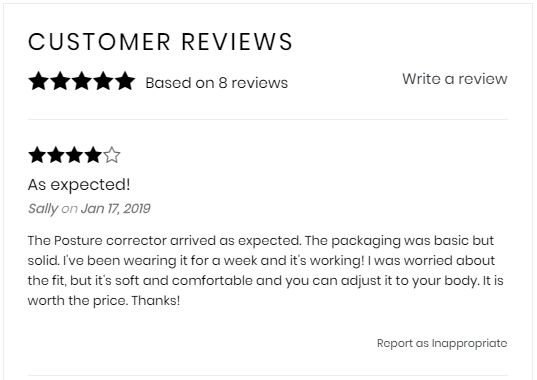
Source: Beamgears
People feel more likely to do something when they see that others have done it before, which is called social proof. However, they don’t trust marketers but others like them. In fact, 92% of people will more likely trust a recommendation from another person over branded content. This is where UGC comes in since it’s authentic, widely trusted, and influential. Once tied to social proof, UGC helps build credibility in your brand effectively.
User-generated content strategies to promote dropshipping stores
For dropshipping stores, using Facebook video ads are a crucial strategy to bring engagement (read on to see why). Those ads need to be attractive and trustworthy enough to get clicked, otherwise they will be skipped. By adding UGC to your ads, you can easily build trust and grab viewers’ attention, which helps increase the likelihood that they’ll click the link (or a button like Shop Now) to access your store. All things considered, using UGC in your Facebook video ads and your store should be a priority.
Tie UGC into your Facebook video ads
As an eCommerce store owner, you can adopt several digital marketing strategies to boost conversions and grow revenue sales. But, since you’re working specifically in the dropshipping market, it’s highly recommended that you should focus more on Facebook video ads.
Why Facebook video ads can help kick-start your dropshipping business:
? First, marketing strategies like content marketing take a lot of time (sometimes, even several months) to bear fruit. How about social media marketing like Instagram and Facebook display ads? Somehow, they work. But, if a picture is worth a thousand words, it can say that a video is worth a thousand pictures. Nowadays, 72% of people would rather watch videos than reading product descriptions. After enjoying a product video, they are 64 – 85% more likely to make a purchase! These are truly huge numbers, right?
? Second, if you can’t visit a store to touch a product in person, the next best thing is watching someone else use it. Using videos, you show your viewers how exactly your product looks like and how to work with it in real life. They may have a sense of product quality and eliminate doubt from their mind.
?Third, Facebook video ads are effective and engaging for targeting cold traffic who don’t know your brand. Most “winning products” need some explanation, and the best way to do this is through video content. Besides, if you run video ads, you can retarget your video viewers based on the percentage of the video watched. Then, use those audiences to create a sales funnel and convert them into hot traffic, and subsequently into customers.
? Finally, Facebook’s ads algorithm is powerful to determine the best ads to show the best audience while also creating a good user experience. Therefore, if you’ve created a high-quality video, you should use Facebook to promote them to make sure your product will be shown to the right customers.
Now you’ve understood why Facebook video ads are key to success. Next steps are learning how to combine UGC with them to generate sales quicker.
1. Advertise how-to videos
How-to videos are good choices to show the benefits of a product and get viewers engaged. Use them to promote your product on Facebook.
Basically, there are three ways to have a how-to video:
- Download the product video available on the supplier’s site and edit it the way you want.
- Look for all clips or videos about your product on Facebook, YouTube, etc., and then select the best one from them. Edit it if necessary.
- Order a product you want to promote from your supplier, send it to some people, and ask them to record a video about the product. You can use Fiverr to find those who will help get your content made.
No matter which method you choose, your video ad should:
- Be fast-paced with captions on screen, modeled after a regular viral video on Facebook.
- Not look like an ad at first glance. It should be a normal viral video.
- Have a good scroll stopper which is the first 2 – 3 seconds of the video that can grab viewers’ attention, and stop them from scrolling. It’s good to test multiple variations with different scroll stoppers.
- Identify a problem of customers in the first 3 – 5 seconds of the video and offer a solution. This tip is really useful especially for dropshippers selling health products.
When you’re done with the creation, your video ad will be shown on Facebook as below:

Besides the above tips, also remember to write compelling copy. Below is a good example. The copy uses some power words like “beautiful fashion”, “only”, and “free shipping”. This helps the product become quirky, which makes it perfect for capturing the impulse buy. The ad got over 1m views and 1.500 likes.

Note:
- If you use YouTube videos, it’s better not to show the face of any person on the video. This makes sure you aren’t accused of taking the video illegally. If you can ask for permission, do it.
- You can use your video for your YouTube channel or add it to the product description. The video you’ve created doesn’t need to be limited to the ad. Get the most out of your video, and see the number of sales increasing.
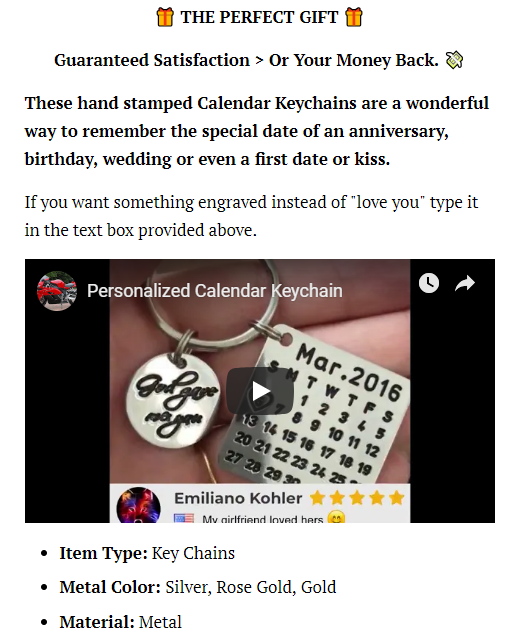
2. Ask for help interacting with your videos
When running the first Facebook video ad, you want to get as much social proof as you can. You want to get your video to spread virally. You want people to like, to comment, to share, to tag friends, to leave their phone numbers, and to click on the link. The more social proof you get, the more sales you make in general. That is certainly your first objective.
However, your video ad doesn’t always go viral naturally. Sometimes, you need to create a momentum it needs to snowball. Simply ask your family members, friends, and others in your network for help pushing your videos.

3. Create a good video thumbnail
Your video is about a product, so your thumbnail should depict it. You can use a close-up of your customer, your influencer, your character, or a shot of your product. Such thumbnails are very clickable and attractive to viewers. Don’t use stock images or random images which aren’t related to your product.

Tie UGC into your dropshipping store
Assume you’ve already run a Facebook video ad. There are some potential customers who want to visit your store to find out more information about your product. To encourage those customers will make orders, continue to optimize user-generated content strategies on your store. Here’s how:
1. Use an actual person for product images
Dropshipping store owners often use images provided by the supplier for their products. It’s the easiest way to get product images for dropshipping. However, savvy customers and competitors can search in reverse from AliExpress or Amazon to find out who’s selling the same products. This can put you at a competitive disadvantage.
To solve this problem, think about using an actual person for your product images. Do either of the following:
#1 Ask influencers to take pictures for you
It’s really simple. Find your influencers on Fiverr, Instagram or Facebook, and then ask them to take a picture with your product and post it on their social page. Don’t forget to ask them if it’s okay for you to reuse the picture on your own store. This way, you have a great Instagram shoutout and a unique product image.

Note:
- Some social media influencers only want free stuff. That means you don’t even have to pay for a shoutout. Just let them keep the product.
- You can also send many items of the same product type to your influencers so that they can do a giveaway for their followers. It’s a good way to promote your brand.
#2 Use pictures from your first customers
Do the same way as you do with your influencers. More specifically, when you have the first customers, ask them what if they take a picture of themselves using your product, and then send it to you. You can give them a discount or any other gift which you think it benefits them.
Then, use the picture of those customers as the product image, like this:

Or, add them to the product description as Gearzii does.

To avoid your customer just taking the discount or free product without giving any picture in return, you should give the offer after they submitted the picture.
2. Add reviews and ratings to product page
79% of customers trust product reviews and ratings as much as a personal recommendation. It’s clear that more and more people now use them to make buying decisions.
You should add reviews and ratings to the page of each product. This way, your potential customers may feel the product has been bought and trusted by a lot of people. They will be motivated to make orders to get the same experience.

To make use of reviews, you can create a single page for those reviews. Basically, a Review page is a page on your site that shows all customer reviews. Let’s take a look at the Review page of The Night Sky to see how it looks like:
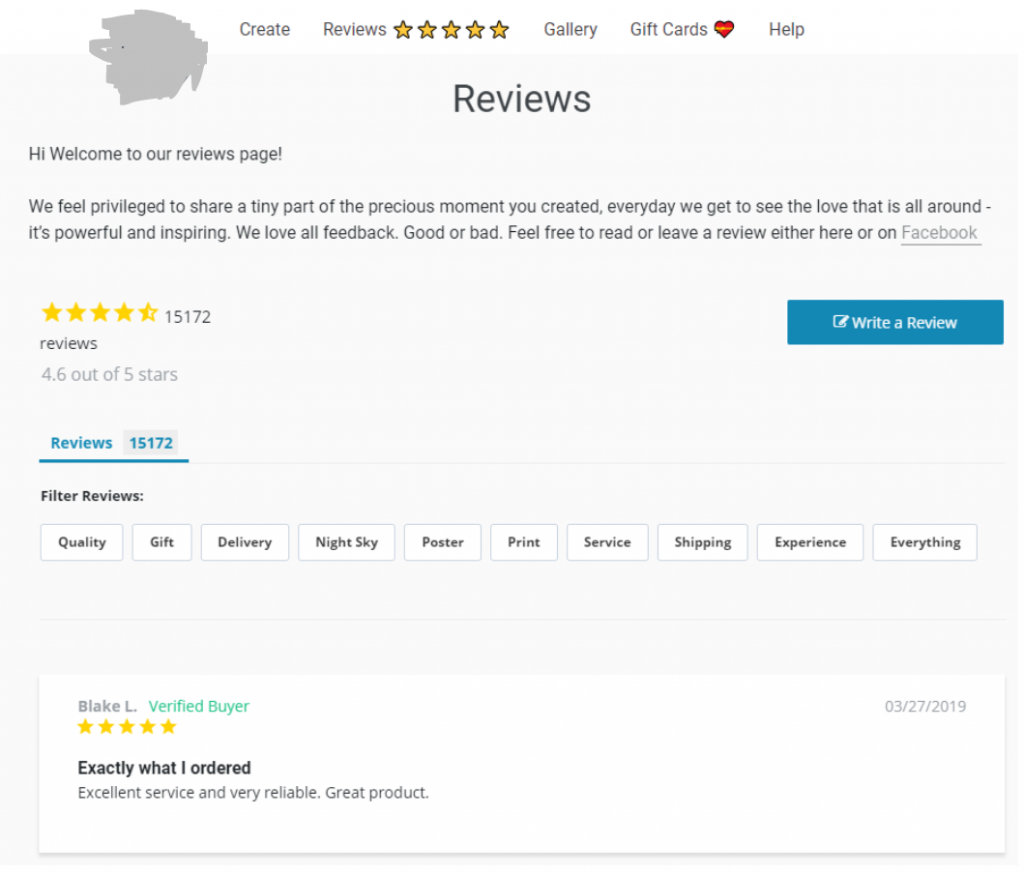
As you can see, The Night Sky displays all the reviews they’ve had on the Review page. They also offer their visitors filters to read reviews by category. By doing this, they can show off their product quality and the satisfaction of their customers who’ve already bought their items. It’s a great strategy!
Tip:
What if you’re a very new dropshippers, and you have no sales? Don’t worry. The simplest way to have reviews and ratings on your site is to reach out. However, this doesn’t mean you should go to other stores on Amazon, eBay or AliExpress to copy and paste the reviews. Don’t ever do that.
Instead, contact your suppliers. Then, ask them if they have any reviews you can use for the products you’re selling. It’s how you ethically get legitimate reviews and ratings. It’s as simple as that.
3. Level up reviews with images
Successful dropshippers allow customer photos in their reviews. In the example below, you can see 4- and 5- star reviews for the fuzzy Vogue hoodie on Doggy Style Clothing’s website. Some may think UGC just helps create social proof, but it can also help with sales.

In the reviews, notice how the customers shared other details about the hoodie like how they felt when wearing it and how it fits their body. They even mentioned their body measurements, the quality of customer service and the shipping time with compliments. Therefore, shoppers who may have the same physical characteristics would know whether or not the hoodie is right for them.
4. Show testimonial videos
Creating a video is a super best way to utilize a testimonial from a happy customer. Testimonial videos, when done right, provide a more human and authentic connection than any typical promotional videos. Take a look at So Aesthetics, and see how they did this successfully.

On their store, So Aesthetics create a separate page for testimonials video. When their shoppers click Reviews > YouTube Hauls, they will see all video testimonials. Each testimonial includes the picture and the name of a customer who already bought their product, along with video buttons. Just click any button to watch the video testimonial.
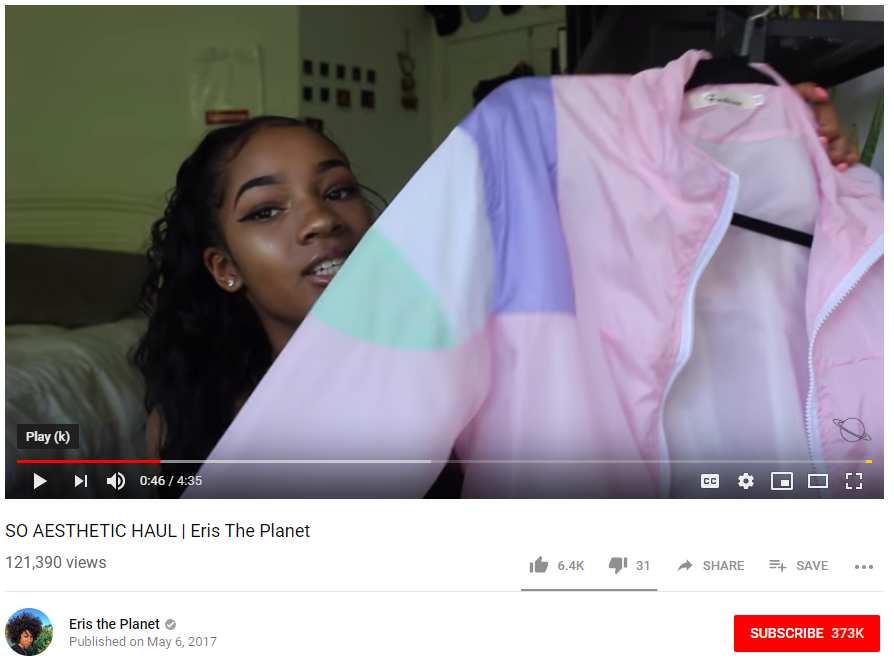
Even better, So Aesthetics gives those customers unique promotional codes that they can offer their followers a 10 – 20% discount on their purchases. Steal this tactic to grow your dropshipping store!
5. Create a Q&A section
Sometimes, shoppers will want information that isn’t included in your product description or anywhere else on your store. They may have concerns ranging from product usage, subjective experience, to technical specifications. When they can’t find out what they want to know, they often abandon their shopping carts or leave your store immediately.
By integrating the Q&A section into your product page, you can give your potential customers a place to instantly ask anyone about your product and have a real dialogue on your site. In addition, a quick response from your or a verified customer increases trust, strengthens engagement, and ultimately boosts conversion.

6. Show social share counts
This is a type of social proof but also optimizes customers’ behavior (also UGC) to build credibility. You can add share buttons to your store to show the number of times your product has been shared over social media.
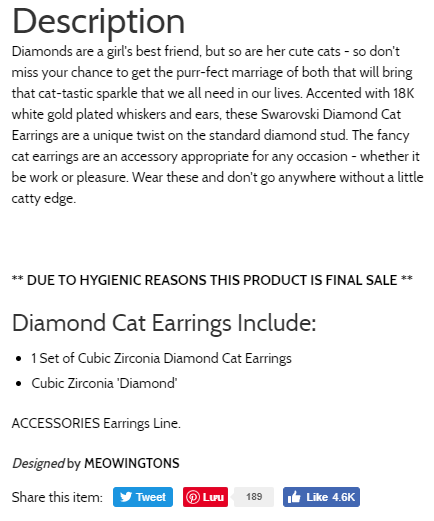
However, a low share count can create negative social proof, and it may be worse than no share count at all. So be careful when applying this tactic.
Over to you
When someone visits your store or watches your video ad, there are things they expect to see and need to see.
They expect to get exact information about your product and find its key benefits. So, they can decide whether they should make a purchase.
That’s why you should follow these UGC strategies to give your visitors convincing reasons. It’s time to take the first step.